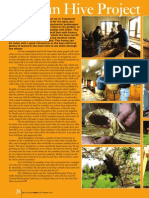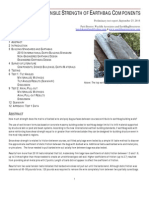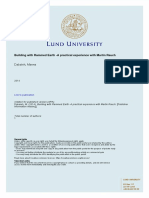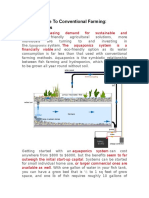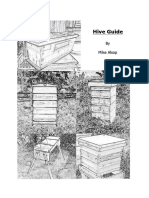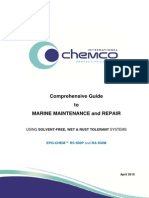1 Earthbag Building in the Humid Tropics
arthbag Building in the Humid Tropics:
Simple Structures
Patti Stouter, ASLA
First edition, November, 2008Online version available at www.earthbagbuilding.com. Please share these free self-help guidelines and let us know how to improve them.






2 Earthbag Building in the Humid Tropics
TABL OF CONT NTS
3About Earthbag6Stabilizing Earth9Exterior Earth Finishes 11STEP BY STEP:11Soil Tests 12Materials 13Layouts for non-hazardous areas 16General Istructions 16Footings 16Laying Bags 18Base Courses 18Openings 19Bond Beam20Roof20Floor20Finishes 21A Note About Working Across Cultures 23Acknowledgements 23The Author24Bibliography
3 Earthbag Building in the Humid Tropics
In many parts of the world buildings must be extra strong for earthquakes or hurricanes and tsunamis. Other publications can help you plan for this.
West Africa, northeastern South America and some parts of China and India do not have many earthquakes. If you live far enough inland where cyclones are not strong and tsunamis can't reach, these guidelines can help you try a new way of building simple structures with earth. Your buildings must resist termites and mold as well as be right for the climate, and for how people live. Ideas for locating and shaping your building to be comfortable are in Shaping Buildings for the Humid Tropics, and examples of simple buildings are in Simple Earth Buildings for the Humid Tropics, both at www.earthbagbuilding.com.
ABOUT EARTHBAG
Flexible form rammed earth, usually called earthbag, goes up quickly and is very easy to learn. Used bags from plaster, grains, or cement are available around the world. Unlike other earth techniques, a wide range of soil types can be used to build with bags. Because the empty bags are very light, they can be used for building in remote areas.
Left: Earthbag construction for a US National Park.
The UN has used this technique for refugee housing. Three ordinary people take about an hour to lay 12 square feet of wall. Preparing soil, filling, placing, and tamping bags do not require special strength or skills. Earthbags don't use any scarce resources.Earthbags can be shaped into traditional walls that resemble standard masonry. Careful work can create beautiful structures with minimal costs. Walls are tamped with hand tools, and when dry become as strong as well-built cob walls or adobe walls. Standard earthbag walls combine the thermal properties of fired and stabilized masonry, with excellent performance in humidity, and good resistance to bullets. Highly insulated walls can be made with naturally occurring
Above: An earthbag home for an artist in South Africa.
1Minke, Gernot (2001).
Construction Manual for Earthquake Resistant Houses Built of Earth.
Eschborn, Germany: GATE-BASIN at www.basin.info/publications/books/manualminke.pdf; Geiger, Owen (2008).
Post-Tsunami Affordable Housing Project.
Available at www.earthbagbuilding.com/articles.htm
4 Earthbag Building in the Humid Tropics
lightweight fills. Bags are covered with plaster to make a permanent wall.Recent testing in an engineering laboratory at Queens University in Canada found that unplastered polypropylene earthbags of dry gravel or wetted and tamped sandy soil resisted almost ten times as much compressive force as conventional wood stud framing, per wall length.
The equipment was not strong enough to cause the earth-filled bag stack to fail, although they compressed somewhat under these extreme loads.
Above: Graceful earthbag shelter in Colorado, US.
The properties that allow curving brick walls to be built of a single width of brick without reinforcing make flexible form rammed earth walls strong. Instead of curving walls, small interlocked piers spaced 4 m apart along a wall can give it side to side stability.
Openings can also be stiffened by adjacent piers, much like standard cob construction styles in many parts of Africa.
Below: Round room in a Thai earth block building.
Curving walls are common in traditional buildings. In many parts of Africa the roundhouse is a standard shape where concrete block has not replaced it with rectangular forms. Round building walls use less material and labor for the same interior space. And rounded rooms are always perceived as being larger than the same size rectangular room.
Perhaps it is more important to decide what shapes feel right to the people who will use them.Further testing will refine earthbag uses for multi-story building or complex forms. But earthbag structures in many places are performing well- including South Africa, Uganda,
2Daigle, Bryan C. (2008).
Earthbag Housing
. Ontario,Canada: Queen's University, p. 1193Hunter, Kaki and Kiffmeyer, Donald (2004).
Earthbag Building
. Gabriola Island, BC, Canada: New Society, p. 384Smith, Michael. 'Cob' in Elizabeth, Lynne and Adams, Cassandra (2005).
Alternative Construction.
NY: Wiley, p. 123



